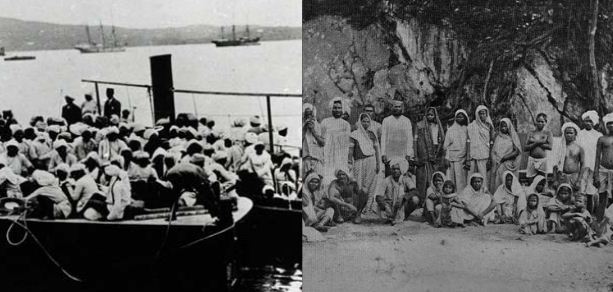During the past few decades, various erstwhile colonial nations have tried to correct their mistakes of the past by recognising their brutality. Recognition of the Black slave trade is one of them. However, there is another significant demography that faced equal (if not more) savagery from Britishers. They are called Girmitiyas, and yes, they have Indian origin.
Who are Girmitiyas?
Basically, it’s the term used for poor people from Uttar Pradesh and Bihar, who were exported as slaves by Britishers in their other colonies. The term Girmitiya has its origin in Bhojpuri. When Bhojpuri speaking people tried to pronounce the word ‘agreement’, it came out as Girmit in their own language. That’s how the term came into existence, and labourers being exported from these regions were colloquially termed as Girmitiya.
How did they get there?
As the Industrial revolution started to gather momentum, Britishers needed more and more cheap labour. Since they had ‘n’ number of colonies, it became easy for them to transport slaves from Africa to those areas where they had established manufacturing units.
However, in 1833, Britishers were forced to abolish the slave trade from Africa. But they still needed cheap labour. So, they resorted to famine and poverty-hit regions of Uttar Pradesh and Bihar. Poor people were given an agreement that promised better lifestyles and salaries in other colonies like Fiji, Mauritius, Guyana, Trinidad, etc. The first set of these labourers arrived in Mauritius during the 1830s.
Read more: Hindus in Mauritius have Made Hindus all over the World Proud
What did they do?
Britishers chalked out all sorts of work from Girmitiyas. Since most of them had expertise in farming at their native place, Britishers started to use their stamina for the production of opium and other cash crops. Their days would start at 4 AM in the morning and would end in the evening. At the very least, they had to work for a minimum of 9-hours and that too, without any breaks. They did not even spare women and children.
Not just farm, they were also sent to work in filthy industrial working environments like extraction of coals, mining of minerals from underneath the Earth. Many of them lost their lives, while those who survived could not complete the terms mentioned in their agreements.
What happened to them?
From the 1830s to 1917, it is estimated that a total of 1.2 million indentured labourers from UP and Bihar were transported to foreign lands. When indentured labour was legally abolished in 1917, most of them could not return to their motherland, and decided to settle in the lands where they were transported.
What are they doing now?
Currently, in the Caribbean island of Guyana, more than 40 percent of its population has Girmitiyan background. You must have heard of Shiv Narain Chanderpaul and Ramnaresh Sarwan. Both of their forefathers were Girmitiyas.
Similarly, in Mauritius, more than 60 percent of the population is composed of descendants of Girmitiyas. They have played a vital role in the development of Mauritius. They have also occupied all sorts of powerful posts in the country, which includes the position of the Prime Minister as well.
Read more: Hinduism in Mauritius: A mini-India near Africa
In Fiji, more than 40 percent of the population traces its origin to Girmitiyas. Their contribution to Fijian polity is well-recognised. Mahendra Chaudhary, former Prime Minister of Fiji, Professional boxer Joy Ali, Soccer player Roy Krishna are some of the prominent names in the country, whose forefathers were brought in the country as indentured slaves.
Read more: Hinduism in Fiji: How Hindus settled there and their current status
Today, the population of Girmitiyas is approximately around 12 million. Other than the aforementioned countries, they are also a strong voice of reckoning in countries like Seychelles, South Africa, Trinidad, Jamaica, Martinique, Guadeloupe, Cayenne, Belize, Grenada, St. Lucia, St. Vincent, St. Kitts, St. Croix, Suriname, and Nevis.
Girmitiyas need recognition for their silent morality
Wherever Girmitiyas went, the spirit of hard work ingrained in them through the Sanatni moral system helped them in flourishing. They helped in strengthening the moral, social, and political fabric of countries where they were transported as slaves. Moreover, they should be appreciated for maintaining their cultural roots along with intermingling with the local population.
Read more: Hinduism in Suriname: How migrant workers created a mini-India in South America
On one hand, we are watching descendants of Black slaves creating ruckus and anarchy through the BLM movement, while on the other, we see Girmitiyas silently contributing to the development of their countries. It deeply pains us as Indians when we watch our cricket team bending their knee for rioters, while there is no word of condemnation for our own Girmitiyas.
































Eye opener
Our media is MOST useless and disgraceful. Our education system has lied to us. None of this information is available to us in India or US. Such a horrible deception on Indians by useless political party for their gains. Con Ning us for centuries.
Thanks tfi for revealing these truths. Hope more people become aware of this.